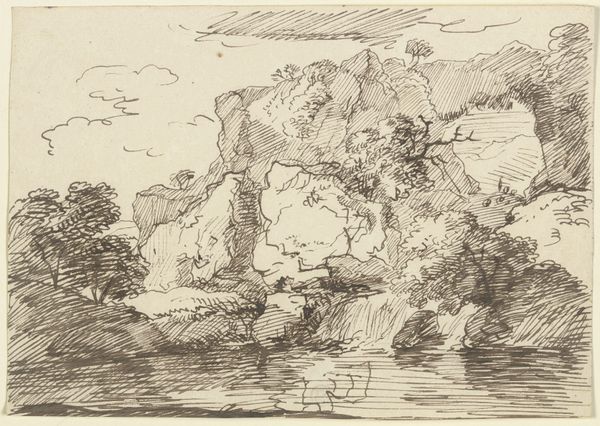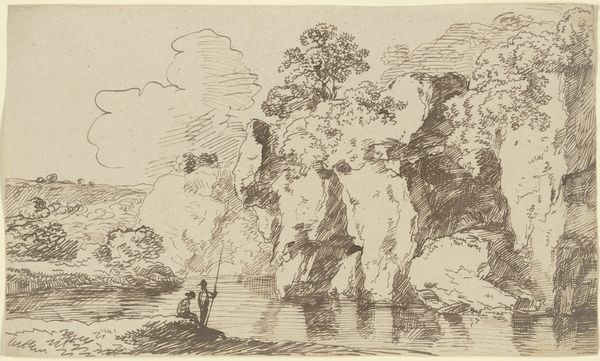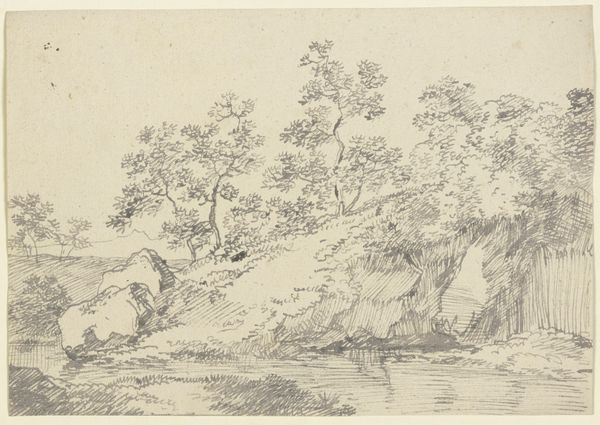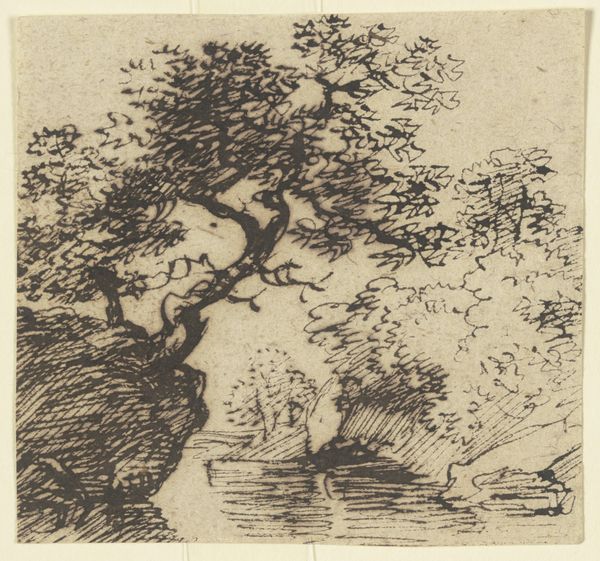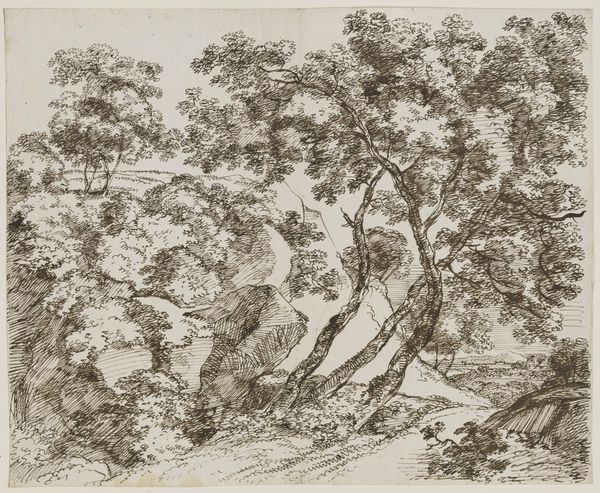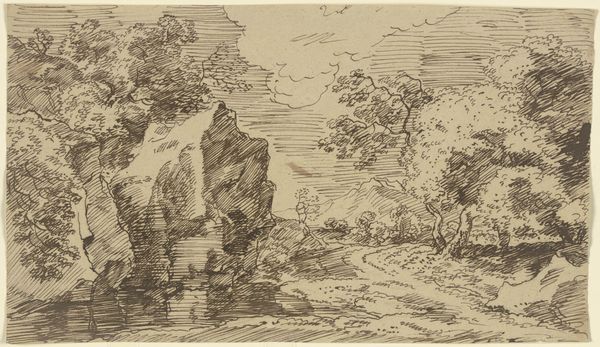
drawing, paper, ink
#
drawing
#
ink drawing
#
landscape
#
etching
#
paper
#
ink
#
romanticism
#
15_18th-century
Copyright: Public Domain
Curator: Here at the Städel Museum, we have "Zerklüftete Felspartie an einem Gewässer," which translates to "Craggy Rocks at a Body of Water," rendered in ink on paper. It's attributed to Franz Kobell, dating back to the late 18th century. The landscape tradition certainly pulses through this piece. What catches your eye, first and foremost? Editor: The way the light plays across those rocks. There’s something quite stark about the image. The bare branches against the sky suggest a specific time of year, perhaps hinting at themes of death and rebirth so common during the Romantic era? Curator: Yes, that somber tonality is rather evocative, isn’t it? Remember, in the late 1700s, landscape painting was about more than pretty scenery. It became a vehicle to explore powerful ideas of nature's grandeur, its capacity for both beauty and destruction, very much fueled by Enlightenment and Romantic philosophies. The etching style lends itself perfectly to capture this range. Editor: Precisely. Consider the Romantic obsession with the sublime. Those craggy rocks and gnarled trees aren’t just topographical features, they evoke a psychological state. The image conveys isolation, even a kind of spiritual contemplation. Are we perhaps meant to feel the insignificance of the human presence, set against nature’s ageless power? Curator: That interpretation rings true when considering the social role of landscape in those times. Think of the emerging middle classes venturing into newly accessible landscapes. These images visually articulated anxieties about our place in an industrializing world while simultaneously celebrating national identity, of which landscape was becoming emblematic. Editor: Indeed, one sees here a possible encoding of this very tension. But in the immediate, the image strikes one with the symbolic weight those trees, clouds, and stones carry within our collective psyche. Curator: Absolutely, viewing it now through both lenses allows us to reflect not only upon the visual language of its era but how these pictorial forms may reflect our present preoccupations as well. Editor: A landscape fraught with complex symbolism! A fascinating peek into the meeting of internal emotional terrain with our changing social geography, if I may add.
Comments
No comments
Be the first to comment and join the conversation on the ultimate creative platform.
